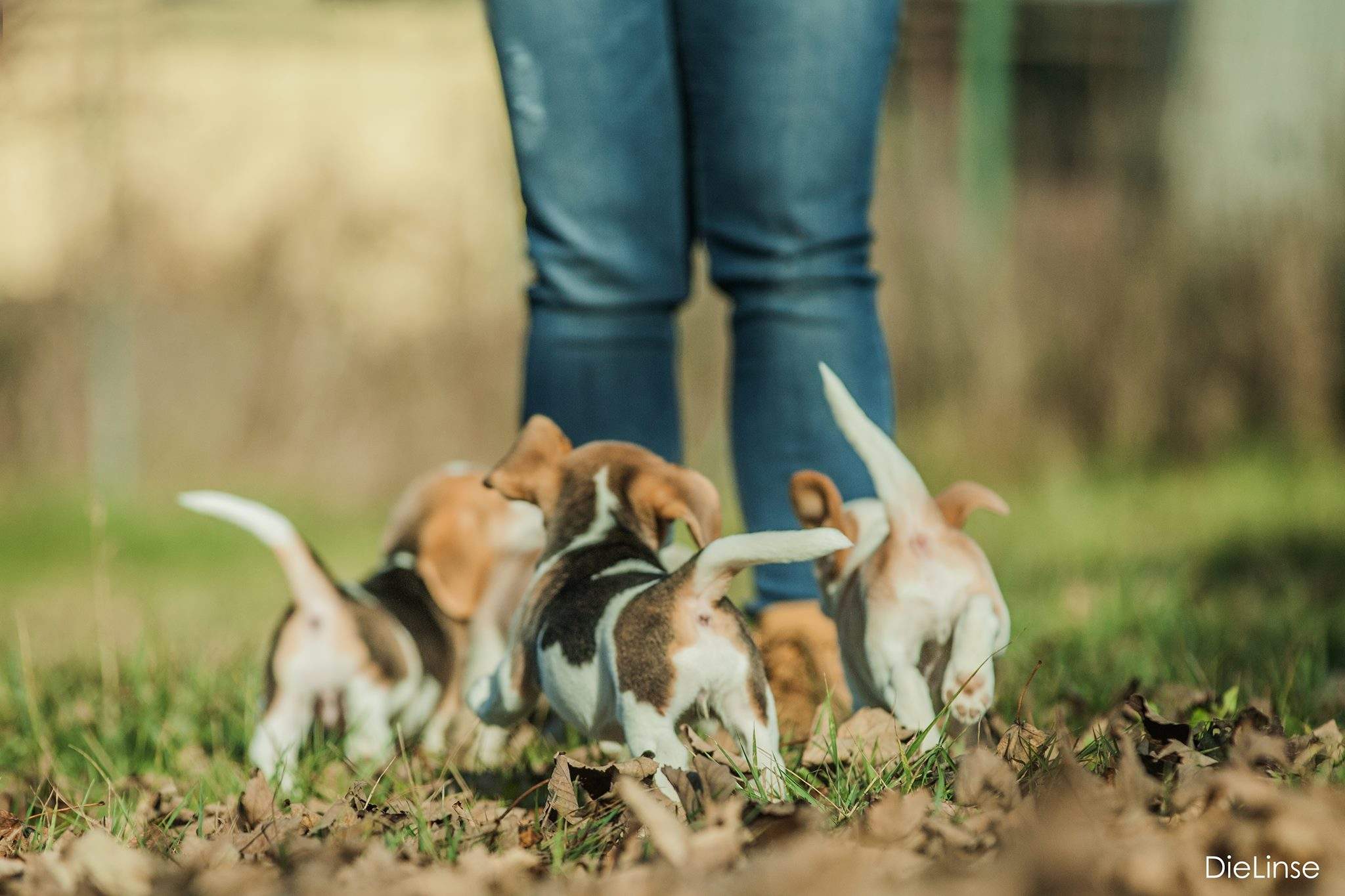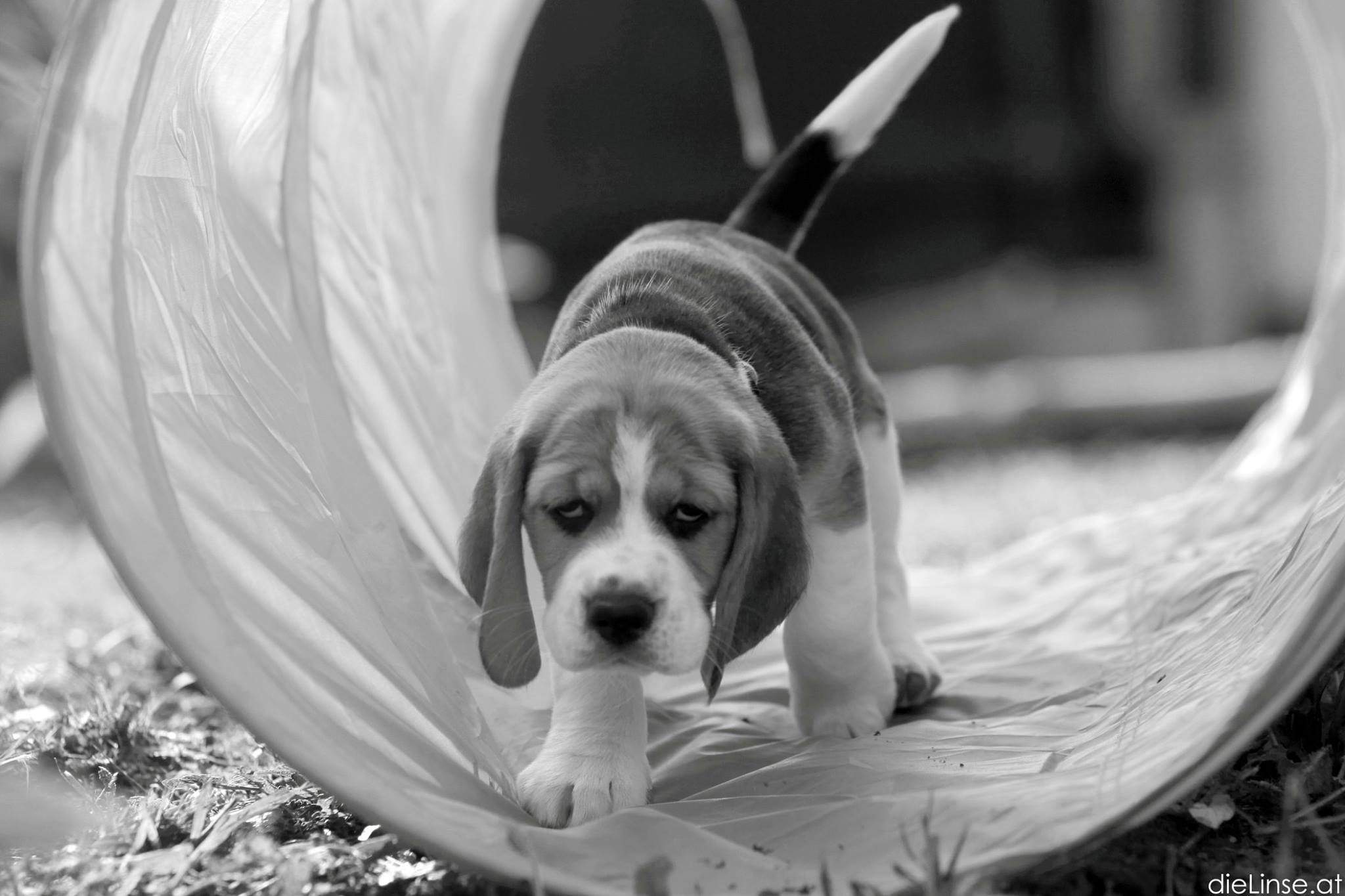Socialization - a key word
The third week in the puppies' lives is the start of a big race called socialization in our home. The puppies start the critical socialization period and we have to keep up with them.
" Our core task as breeders is to teach puppies to be enrichment/novelty seekers, and to trust that the world holds good things for them. "
The real fun begins as the puppies grow. Things are going to begin flying fast, we have to know and follow the developmental periods. The next weeks are the most powerful ones in the puppies' lives and what we choose to do or not do during this period can completely change the outcome for their futures. Getting all the bases covered in a time frame, scheduling all the activities and visits the puppies will need is a much bigger job than most new breeders anticipate and future owners usually don't know at all!
When you meet a "great" dog, one that's never aggressive, calm in public, friendly to strangers, gives up their food and possessions willingly, a fun companion that you can take anywhere and do anything with, that is directly in opposition to a dog's default genetic programming even if when speaking about beagles they do carry the instincts just some of those - like being vigilant or guarding a property are much less strong as by other breeds. People often think there is something "wrong" with an aggressive or fearful dog - you have to do some pretty strong interventions in the first 12 weeks of the puppy's life in order to shape the kind of dog you would want to live with. Nevertheless the breed choice can show in advance how the puppy will became if he gets the right socialization. Of course, puppy mills, one-time-puppy makers would never be able or even will to work that much with puppies.
Evolutionary strategy
Puppies don't have the mobility to travel too far from the protection of their family before they are 8 weeks old. By 8-12 weeks old, they have the envy to wander off and get into trouble - it's a very good thing, from a "survival in the wild" point of view. In the wild, fear of the unknown is an excellent adaptive strategy. However it's not so good when living in the "world of the humans".
The puppies' biological clocks are ticking and that window of opportunity is closing a little more each day. Contrary to what you might read on the internet, you don't have until four or five months to get this socialization work done - a great deal of the most important and irreplaceable socialization experiences should take place when the puppy is still with the breeder, and the breeder knows what he's doing. Sure if important things were missed by the breeder, you can still try to make up for it later, but it's a long hard way, and the path gets harder and harder every day after 12 weeks old.
In this first week of the socialization period (in the 4th week of life) we begin inviting potential puppy owners over to meet us and help begin the socialization process, without even knowing about their part. We also introduce at least one new toy, visual object, or experience to the puppies each day during this week. In practice, we usually are introducing several new things to the puppies each day.
Productive enrichment
They're learning how to walk now, so they need unobstructed space in which to move, first their big whelping box. The most productive enrichment at this stage involves the presentation of novel objects so we get the startle/recover/curiosity/exploration cycle. Of course, as they get a few days older and their play pen will become bigger, they will have toys and objects to play with all the time. But that's a different class of enrichment.
New toys are great "novel" items. It's amazing how you can put three toys down, one of which is new, and the puppies will swarm to the new one. But something as basic as being taken out to walk and play outside the pen for some minutes is equally novel and good. Just a sheet of foil or bubble foil in the bottom of the whelping box for a minute or two, or adding a potty area, are new experiences.
The puppies can hear now and sound becomes a very important tool in shaping their personalities. There are three basic areas of importance when it comes to sound at this age. Our goal is to balance these three types of sounds to create emotional stability and low stress levels:
- Ambient Environmental "Centering" sounds: A recent study has shown that classical music has a de-stressing effect on shelter dogs,and hard rock music has the opposite effect. So we play a soft bed of classical music in the puppy room regularly
- . Sharp, sudden, sounds during the 3-4 week period to encourage the startle recovery cycle. This is to build emotional resilience.
-
"Habituation" noises, both live and potentially recorded, of things like show noise, babies crying, other animals noises, machinery, engines, fireworks etc.
Confidence & trust
How we can help our puppies to grow into amazing adults:
- ensuring puppies and mom are content in their living space
- mom is modeling desirable behavior
- positive exposure to a variety of environments and stimuli
- building resilience and self-regulation through small challenges they can conquer
- knowing each of our puppies’ abilities and challenges, and
- being intentional in their interactions with them…
...to avoid when choosing a breeder
- A "breeder" that isolates the puppies from people and other normal environments for the vast majority of each day, especially if they are also contained to a small space. This includes being in a kennel or barn where the primarily interaction is giving food and brief meaningless (cleaning) or even negative interactions (being shoved). In this case the puppies could remain almost completely “unsocialized”. Even if such puppies come to trust and bond with a person once adopted, they will likely retain their distrust of new people due to the development of their brain, especially if they did not receive intervention during the period of 8-12 weeks either. And especially if the mother is also poorly socialized or chronically stressed.
- Socialization or interaction with people and the environment that is often aversive: scary to the puppy. This could result in fear, high anxiety and hyper-excitability in the future. Sometimes this happens in a well-meaning context, when "breeders" use certain training methods such as shock, choke or prong collars.
- Purchasing a puppy that is either younger than 8 weeks, or, less well-known, older than 14 weeks. 12-14 weeks of age is considered the end of a dog’s main socialization window. The latter is fine if the puppy has exceptional socialization during that time by us, including plenty of positive time spent without their littermates, off the property, walking on leash, crate training and anything else you’d like the puppy to be comfortable with in adulthood.

